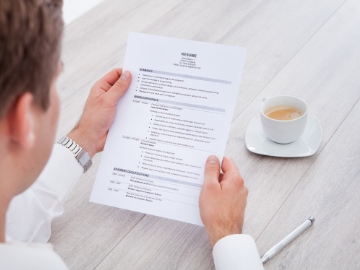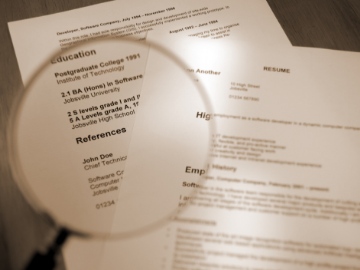When and How to Follow Up on a Job Application

There can be a certain feeling of being lost after you send in your resume. You aren't sure if you should follow up, when, and how to do it. This period, sometimes called a "black hole," can be difficult for job seekers.
The "black hole" requires patience because you don't know the internal hiring processes of your potential employer. However, there's an ideal time and way to follow up on your job application. Know more by reading this article.
When to Follow Up on a Job Application
The hiring process length will change depending on the company and position you're applying for. For entry-level positions, it might be as short as a week. For higher positions, it can take one to three months.
A company can lose a few applications because of the volume of applicants they receive. It can also happen due to forgetting over a long time. You must know when to follow up on a job application. Following up helps you remain visible and serves as a reminder.
The ideal time to follow up depends on your stage in the hiring process.
-
After you send in an application
For this stage, the ideal time is after five to 10 business days. You can stay visible to the company without appearing too enthusiastic. This waiting time also applies to subsequent follow-ups until the next stage.
-
After your first phone screening or in-person interview
You can follow up after an initial phone screening or interview on the same day. Use the fact that the event is fresh in their memory. Thank them for their time, and ask any questions you may have.
At most, follow up an interview a day later. Any longer, they may forget the details you want to ask for.
-
After receiving a "wait for an update" email
Companies will often send applicants emails asking them to wait for an update. This situation can be tricky, as too long a wait risks getting your application forgotten. The general rule is to wait for five to seven days, but this can vary.
These general rules should help you to decide when to follow up on a job application. However, feel free to reach out if an important matter arises. For instance, you should inform the company if you receive another job offer.
How to Follow Up on a Job Application
Now that you know when, here are the best practices for following up on an application. Knowing how to follow up on a job application is as essential as knowing when to do it.
-
Use the company's preferred method of communication
Use what you have been using in your application process. For example, if all your communications happened over email, stick to email for non-urgent concerns. It could be off-putting if you switched suddenly to texting after a phone screening.
-
Be concise
Recruiters and HR employees are extremely busy. It's best to be specific and direct if you're reaching out. You shouldn't take unnecessary time, which can paint you in a negative light.
-
Ask about the next steps
After every stage of your hiring process, always ask about your next steps. This practice will allow you to know how long the wait will be, reducing anxiety. This habit also enables you to identify things you need to do in the meantime.
-
Engage through social media
An indirect way to remain visible is to engage the company's social media. React to and comment on their posts to show your interest in the industry.
-
Send value
Your goal as an applicant (and employee!) is to be valuable. A good strategy is to research developments in the company's industry. You can then bring up what you've learned to show your dedication.
You don't even need to mention the application. Show your interest by sending value to the company and remaining visible. Send an email such as, "I read this article which I think you'll find interesting..."
Escaping the Black Hole
Knowing when to follow up on a job application can be of advantage. You're less anxious about being forgotten and more confident, which is attractive to employers. Combine this with the best practices on how to follow up on a job application, and you can escape the dreaded "black hole" of uncertainty.
If you want more help, consider using Career.com! We can guide you through every step of your job-searching journey!


